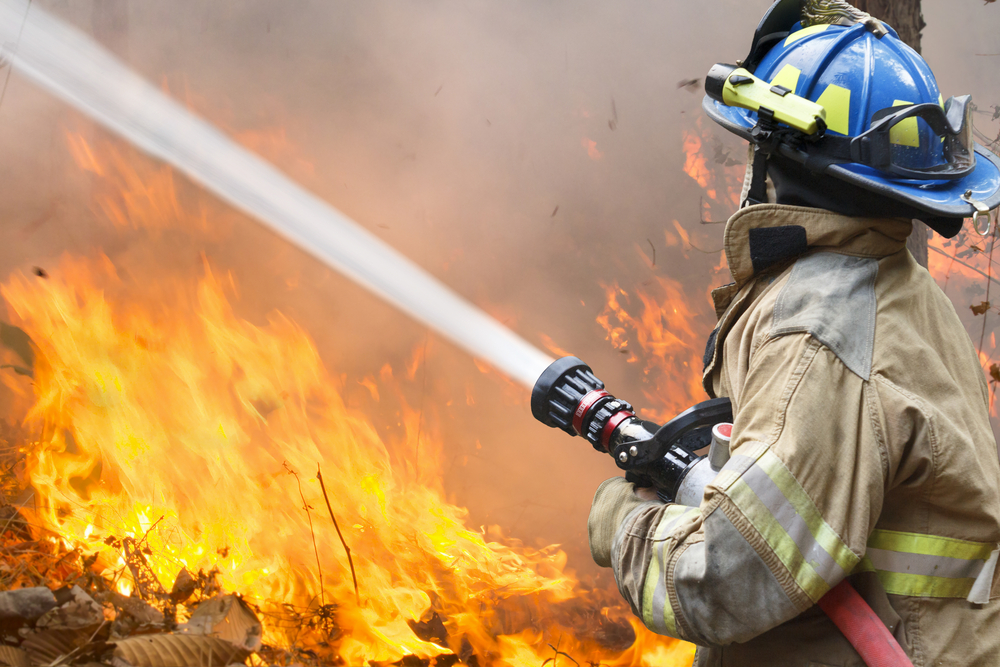
Both Republican and Democrat members of the House appeared poised during a Wednesday hearing to reauthorize key FEMA programs providing matching grants for local firefighters, though the level of funding is still up in the air.
Members of both parties appeared convinced the grants, known as the SAFER (Staffing for Adequate Fire and Emergency Response) and AFG (Assistance to Firefighters), are critical to helping local communities finance equipment purchases, training and recruitment of community firefighters. Federal funding for the grant programs, currently at $690 million for the fiscal year, expires Sept. 30 with the government’s fiscal year, and the programs will expire Jan. 2, 2018 without reauthorization by Congress.
The hearing comes at the peak of summer wildfire season during which hundreds of thousands of woodlands in the west are typically scorched by wildfires, and soon after the fire in the Grenfell Tower apartment complex in London killed dozens, noted Rep. Barbara Comstock (R-VA), the chairman of the House Committee on Science, Space, and Technology’s Subcommittee on Research and Technology, who said she plans to move legislation to reauthorize funding “to ensure our nation’s firefighters and paramedics have the tools they need to fight fires.” The panel has oversight over the U.S. Fire Administration and the grant programs, which come under the Federal Emergency Management Agency and the Department of Homeland Security.
“These grants are vital to keeping our communities safe,” said Rep. Elizabeth Esty (D-CT), who said 80 percent of her state’s firefighters are volunteers, a figure similar to many states.
“The availability of these funds is critical to local communities,” said Rep. Eddie Bernice Johnson (D-TX).
Committees in both the House and Senate are debating bills that would reauthorize the grant programs. But there is some pushback from conservative groups. The Heritage Foundation, for example, has been arguing for years that the grant programs are ineffective and wasteful, citing recent audits by the inspector general of DHS.
The Trump administration has proposed funding the grant programs at about $670 million, just less than the current appropriation, but significantly down from prior years, when funding topped off at $810 million.
The decline in funding is despite the fact that many rural fire departments are still relying on decades-old equipment and even operate with dirt floors in their fire stations, according to Steve Hirsch, first vice chair of the National Volunteer Fire Council, who testified before the subcommittee. “Basic needs are still not being met by rural fire departments in our state,” said Hirsch, who is the chief training officer for the Grinnell (Kansas) Fire Department.
Leaders of the firefighting community urged continued funding for the programs.
Denis Onieal, acting administrator of the U.S. Fire Administration, said despite decades of progress in fighting fires, certain trends are increasing the threats of fires, which kill about 3,000 American civilians a year and cause billions of dollars in property damage. Among these are new materials and methods used in homebuilding which incorporate larger floor plans, bigger fuel loads and different materials, and the aging of baby boomers, who tend to use more emergency services.
Expanding development, he said, has also created a situation increasingly where “civilization meets forest,” growing the threat of wildfires. “What once was seasonal is now perennial,” said Oneial. In addition, fire departments are expanding their duties; with many now responding to shootings and other emergency situations.
H. “Butch” Browning Jr., president of the national Association of State Fire Marshals, touted federal funding for fire prevention and early detection programs. “People are alive today, in part, because of grants to your local firefighters,” said Browning.
SAFER Grants are awarded to help local fire departments recruit and retain volunteer firefighters, who still make up as much as 70 percent of the nation’s firefighting force. AFG Grants help finance equipment and training for local departments.
Also testifying at the hearing were: John Sinclair, president of the International Association of Fire Chiefs; John Niemiec, president of Fairfax County (Virginia) Professional Firefighters and Paramedics; and Gavin Horn, research director for the Illinois Fire Service Institute.




